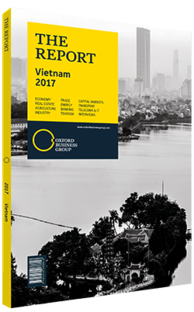Vietnam's banking sector shifts from short-term pressure on books to long-term debt management
Non-performing loans (NPLs) continue to be a challenge for Vietnam’s banking sector following the banking crunch of 2012. The government and the State Bank of Vietnam (SBV) have made the issue a priority. A key step was the creation of the Vietnam Asset Management Company (VAMC) in 2012. NPLs built up thanks largely to poor lending practices at a number of banks. Bad loans were particularly prevalent in state-owned enterprises (SOEs) and the real estate sector. Officially, according to the SBV, the NPL ratio at the end of the third quarter of 2016 was 2.53%, down from 2.58% in the second quarter and 2.62% at the end of the first. However, this official NPL figure is widely regarded as not revealing the full extent of bad debt. In 2014 the rate was estimated by Moody’s investor services as at least 15%, and some in the sector assert that it may still be around that level.
Vamc
The main means of reducing NPLs on commercial banks’ balance sheets has been by passing them to the VAMC, which issues bonds in exchange. However, as the bonds are effectively collateralised with the bad assets, the underlying issue of bad debt is not necessarily addressed. The VAMC, which currently holds around $11bn of debt, is widely seen as more a “warehouse” of bad debt than a bad bank or a mechanism for reducing NPLs.
Nonetheless, some banks have made significant progress in honouring the VAMC bonds, effectively clearing the bulk of historic NPLs, with Vietcombank expecting to have been the first to repay in full by the end of 2016. Moreover, the process has helped remove the immediate pressure on banks’ balance sheets, and has the effect of hiving the toxic debt off for a period while the sector recovers.
Weaknesses
The weakness of Vietnam’s bankruptcy legislation, which makes it hard for illiquid companies to fold, is one issue. A substantial proportion of the NPL stock is tied up in real estate held by state banks and SOEs; that it is illegal to sell state assets at a loss is a complicating factor. The fact that a large part of the banking sector is in government hands is an issue both in terms of risk management and because taking a haircut on NPLs would have an impact on government finances.
Process
Nguyen Quoc Hung, chairman of VAMC, has suggested that creating a secondary market for the bad assets could be a long-term solution, but the process of fully unwinding the NPL stock is expected to be slow, reflecting the complexity of the challenge. “If you look at countries such as Korea and Thailand, they had huge issues in the past, with NPLs of over 10%, and some countries have up to 17-18%,” Dang Vy, chairman of the Board of Directors of Vietnam International Bank (VIB), told OBG. “To solve this issue takes about ten years. Vietnam is in a similar situation, though it is a bit more positive than Korea or Thailand. Time and capacity have been given to local banks to cope with NPLs, and VAMC instruments will support the banking sector in solving the problem. It is helping the banking system but it is still very slow.”
But Sebastian Eckardt, lead economist for the World Bank in Vietnam, warned that the current pattern of rapid credit growth may entail risks. “There is 18-19% credit growth when the credit to GDP ratio is already high,” he said. “While bolstering investment and growth in the short run, this may actually constrain economic growth in the longer term, as it may raise risks, especially if it fuels investment in speculative assets and poor allocation of capital.” Senior figures agreed that risk management remains problematic, and that the real estate sector in particular could see NPLs build up again. However, most are sanguine about the risk to the real economy. Given the relatively low proportion of bank assets to GDP, the government would in extremis be able to cover the NPL portfolio. The robust economic outlook and ongoing tightening of banking regulations should boost the position of the better-managed banks.
You have reached the limit of premium articles you can view for free.
Choose from the options below to purchase print or digital editions of our Reports. You can also purchase a website subscription giving you unlimited access to all of our Reports online for 12 months.
If you have already purchased this Report or have a website subscription, please login to continue.

